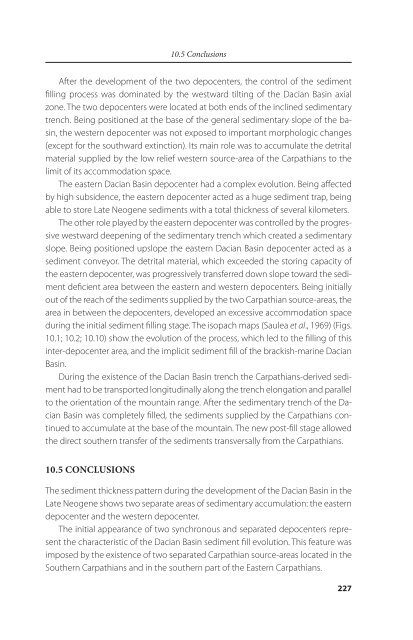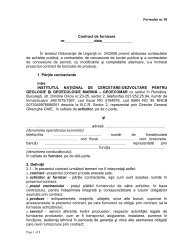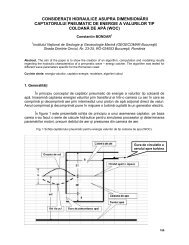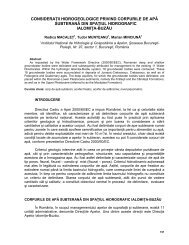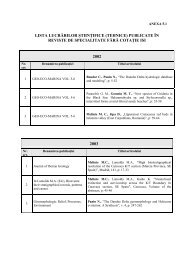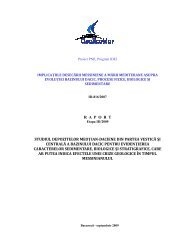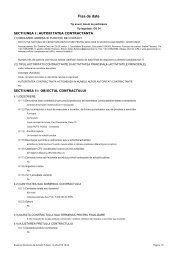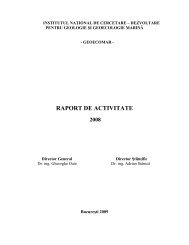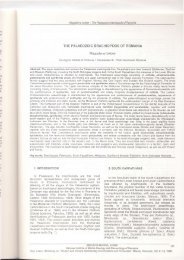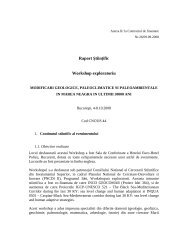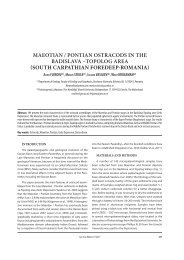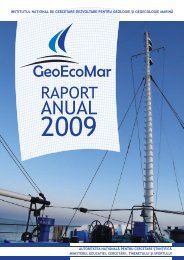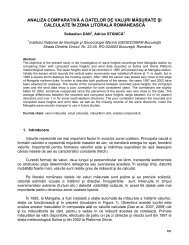DACIAN BASIN - GeoEcoMar
DACIAN BASIN - GeoEcoMar
DACIAN BASIN - GeoEcoMar
Create successful ePaper yourself
Turn your PDF publications into a flip-book with our unique Google optimized e-Paper software.
10.5 Conclusions<br />
After the development of the two depocenters, the control of the sediment<br />
filling process was dominated by the westward tilting of the Dacian Basin axial<br />
zone. The two depocenters were located at both ends of the inclined sedimentary<br />
trench. Being positioned at the base of the general sedimentary slope of the basin,<br />
the western depocenter was not exposed to important morphologic changes<br />
(except for the southward extinction). Its main role was to accumulate the detrital<br />
material supplied by the low relief western source-area of the Carpathians to the<br />
limit of its accommodation space.<br />
The eastern Dacian Basin depocenter had a complex evolution. Being affected<br />
by high subsidence, the eastern depocenter acted as a huge sediment trap, being<br />
able to store Late Neogene sediments with a total thickness of several kilometers.<br />
The other role played by the eastern depocenter was controlled by the progressive<br />
westward deepening of the sedimentary trench which created a sedimentary<br />
slope. Being positioned upslope the eastern Dacian Basin depocenter acted as a<br />
sediment conveyor. The detrital material, which exceeded the storing capacity of<br />
the eastern depocenter, was progressively transferred down slope toward the sediment<br />
deficient area between the eastern and western depocenters. Being initially<br />
out of the reach of the sediments supplied by the two Carpathian source-areas, the<br />
area in between the depocenters, developed an excessive accommodation space<br />
during the initial sediment filling stage. The isopach maps (Saulea et al., 1969) (Figs.<br />
10.1; 10.2; 10.10) show the evolution of the process, which led to the filling of this<br />
inter-depocenter area, and the implicit sediment fill of the brackish-marine Dacian<br />
Basin.<br />
During the existence of the Dacian Basin trench the Carpathians-derived sediment<br />
had to be transported longitudinally along the trench elongation and parallel<br />
to the orientation of the mountain range. After the sedimentary trench of the Dacian<br />
Basin was completely filled, the sediments supplied by the Carpathians continued<br />
to accumulate at the base of the mountain. The new post-fill stage allowed<br />
the direct southern transfer of the sediments transversally from the Carpathians.<br />
10.5 CONCLUSIONS<br />
The sediment thickness pattern during the development of the Dacian Basin in the<br />
Late Neogene shows two separate areas of sedimentary accumulation: the eastern<br />
depocenter and the western depocenter.<br />
The initial appearance of two synchronous and separated depocenters represent<br />
the characteristic of the Dacian Basin sediment fill evolution. This feature was<br />
imposed by the existence of two separated Carpathian source-areas located in the<br />
Southern Carpathians and in the southern part of the Eastern Carpathians.<br />
227


